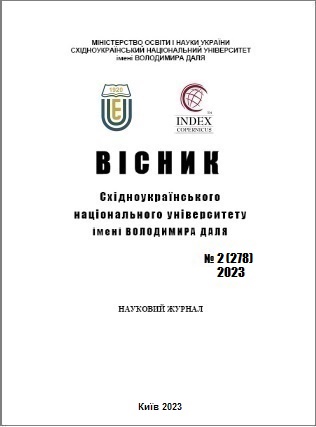Feasibility of using a discrete control system with a refrigeration and condensation node model in ammonia production
DOI:
https://doi.org/10.33216/1998-7927-2023-278-2-112-118Keywords:
air cooler, mathematical model, ammonia production, optimal process parameters, optimization, discrete control system, economic feasibility, discretization degreeAbstract
The task of optimization in the context of the ammonia synthesis process is to find the optimal parameters and operating conditions to achieve certain goals or the maximum productivity of the process under limited resources and circumstances.
In this paper, the use of a discrete control system with a model of an air-cooling device (APO) is proposed and an analysis of the economic feasibility of using the above-mentioned system is carried out.
As a result of such an analysis, it is determined whether approximate solutions are suitable for use in practical applications or whether more accurate methods of solving should be used.
First, the optimal degree of discretization (0.5℃) was chosen, which, on the one hand, ensured the most accurate calculation of small changes in magnitude, and on the other hand, did not lead to an increase in the number of possible states or combinations, which significantly increases computational complexity of the task, especially when working with complex mathematical models.
Secondly, the expediency and effectiveness of using a discrete control system with a model of a cooling and condensation node, taking into account pollution as a disturbing coordinate in the automation scheme of the air cooling device, has been proven. This provides more efficient and accurate control of the process by changing the operating modes of fans or other cooling systems depending on the level of contamination. When the level of contamination increases, the system automatically increases the fan speed or changes the cooling parameters to compensate for the decrease in heat transfer efficiency.
Thirdly, calculations of the economic feasibility of using a discrete system were carried out.
The following assumptions were used for economic feasibility calculations:
- Power of one fan N = 100 kW (according to regulations).
- The cost of electricity is UAH 4.06 per 1 kW (average value in Ukraine for enterprises).
- Duration of operation of the unit in the warm period of the year, H - 5000 hours/year (specified in the text).
- The number of possible fan combinations, K - 256 (as discussed earlier).
The maximum savings, according to these calculations, is UAH 2.7 million.
References
1. Оптимальне керування вузлом охолодження і конденсації газопродуктової суміші у виробництві синтезу метанолу / [М. Г. Лорія, О. В. Поркуян, О. Б. Целіщев, П. Й. Єлісєєв] // Вісник Східноукраїнського національного університету імені Володимира Даля. – 2019. – №2(250)– С. 54 – 59.
2. Energy Efficiency Enhancement in Discrete Manu-facturing Process with Energy Use Parameters / [ Juhani Heilala, Krzysztof Klobut, Tapio Salonen, Paula Jarvinen] // VTT Technical Research Centre of Finland, P.O.Box 1000, FI-02044 VTT, Finland/ - 2011
3. Design and Implementation of a Discrete-Time Proportional Integral (PI) Controller for the Tem-perature Control of a Heating Pad/ [Pathan Fayaz Khan , S Sengottuvel , Rajesh Patel , K Gireesan, R Baskaran , Awadhesh Mani ] // https://pubmed.ncbi.nlm.nih.gov/29746801/ – 2010.
4. Optimal Control Problem of Converter Steelmaking Production Process Based on Operation Optimiza-tion Method/ [Jun Zhang] // Discrete Dynamics in Nature and Society – 2015.
5. Digital twin-based designing of the configuration, motion, control, and optimization model of a flow-type smart manufacturing system/ [Qiang Liu , Jiewu Leng, Douxi Yan , Ding Zhang , Li-jun Wei, Ailin Yu, Rongli Zhao, Hao Zhang , Xin Chen ] // Journal of Manufacturing Systems. – 2021. – №58(B)– С. 52 – 64.

